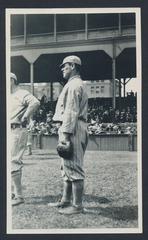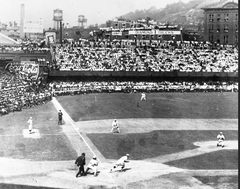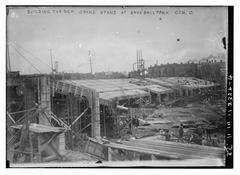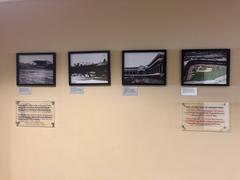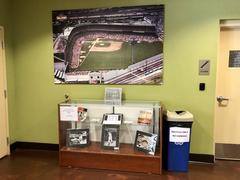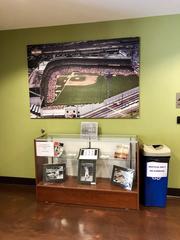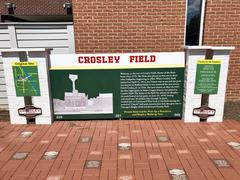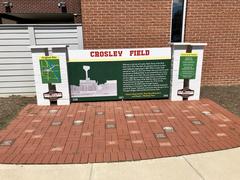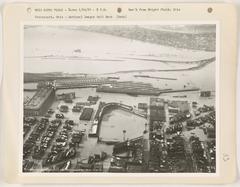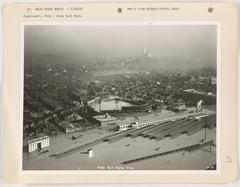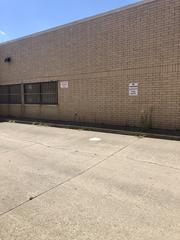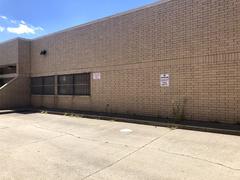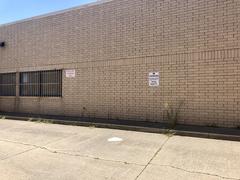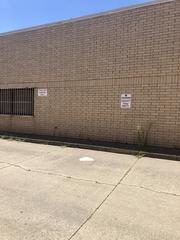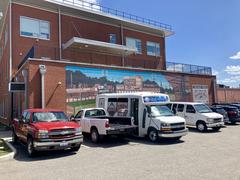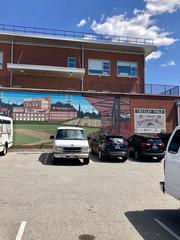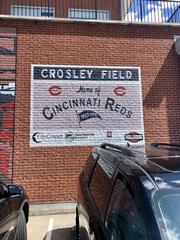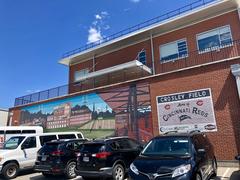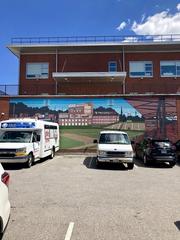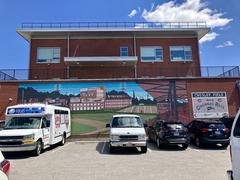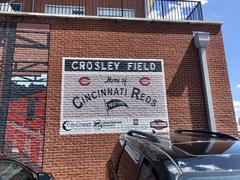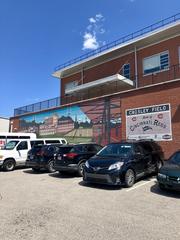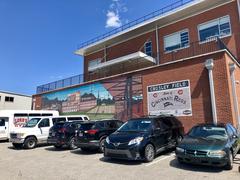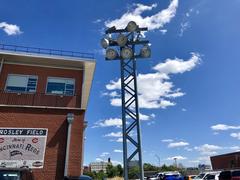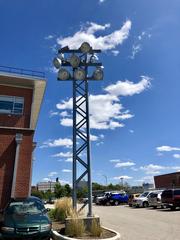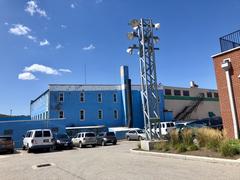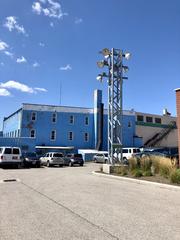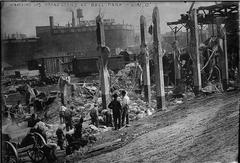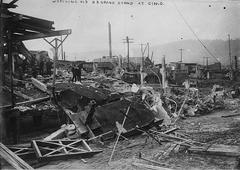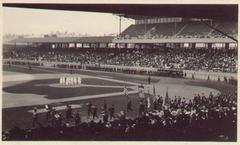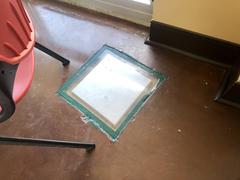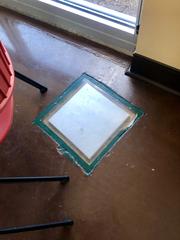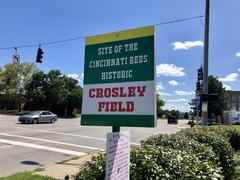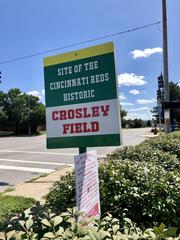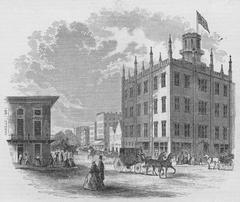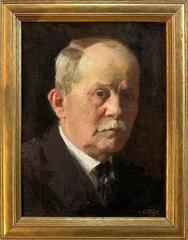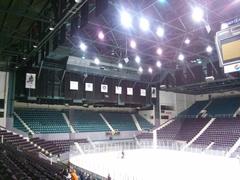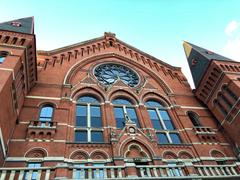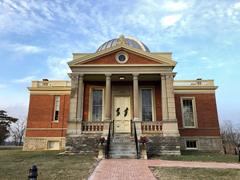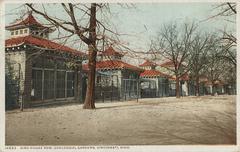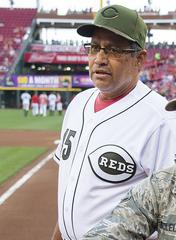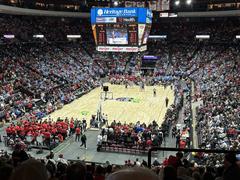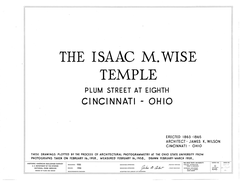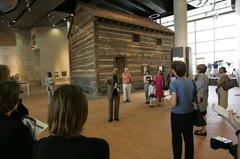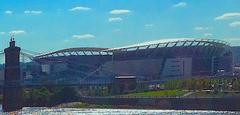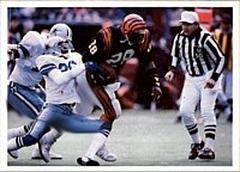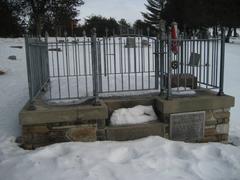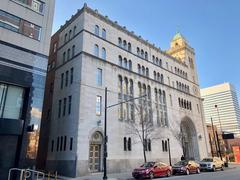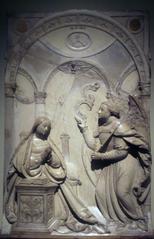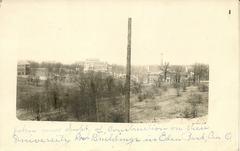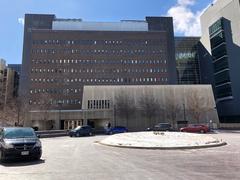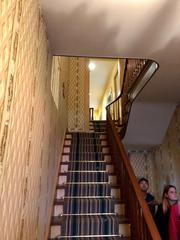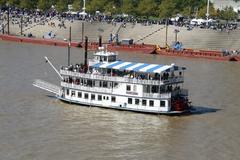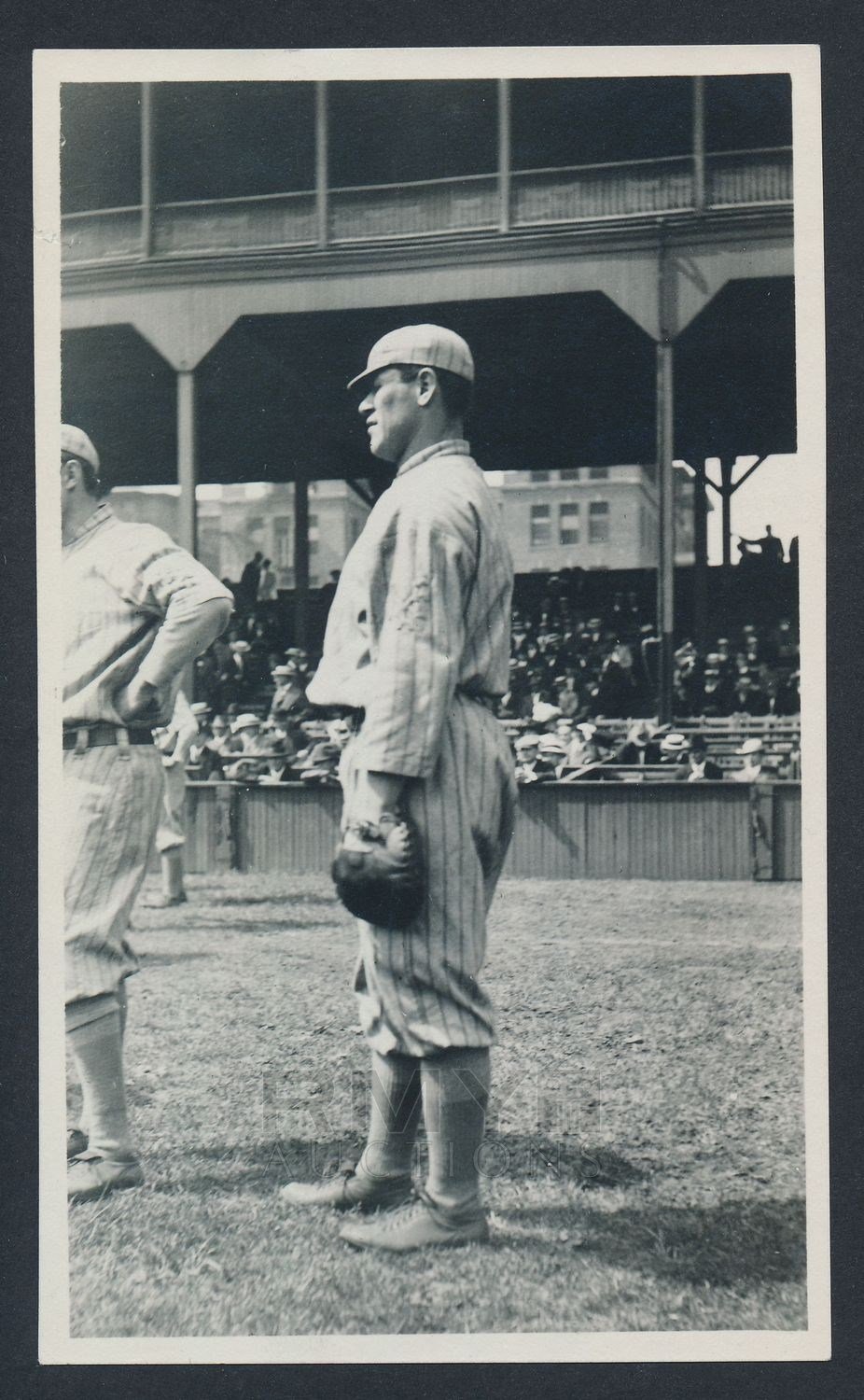
Crosley Field Visiting Hours, Tickets, and Cincinnati Historical Sites Guide
Date: 14/06/2025
Introduction to Crosley Field and Its Historical Significance
Crosley Field is a cornerstone of Cincinnati’s storied baseball history, revered as one of Major League Baseball’s most innovative and community-centric ballparks. Originally established as Redland Field in 1912, this iconic stadium bore witness to nearly 60 years of baseball milestones, including hosting the first-ever night game in 1935—a transformative moment for the sport. The vision of local industrialist and team owner Powel Crosley Jr. led to the installation of a pioneering lighting system, making baseball accessible to working-class fans during evening hours and establishing a new precedent for the game nationwide.
Beyond its baseball legacy, Crosley Field was a multi-use venue that enriched Cincinnati’s social fabric. Its distinctive asymmetrical layout, designed by architect Harry Hake, and its integration into the urban Queensgate neighborhood contributed to its unique atmosphere. The stadium also played host to football games, concerts, and Negro League matches, solidifying its place as a vibrant community gathering spot.
Though the original stadium was demolished in 1972, Crosley Field’s legacy endures through commemorative markers at its original site, a life-size replica in Blue Ash, Ohio, and extensive exhibits at the Cincinnati Reds Hall of Fame & Museum. This comprehensive guide details Crosley Field’s rich history, significance, current memorials, visiting information, and nearby attractions, providing everything you need to experience this treasured Cincinnati landmark.
Additional resources and virtual tours are available for those wishing to deepen their understanding of Crosley Field and its enduring influence (Ballparks of Baseball, Baseball Almanac, SABR).
Table of Contents
- Introduction to Crosley Field and Its Historical Significance
- Origins and Construction
- Key Historical Milestones
- Cultural and Sporting Impact
- Decline, Closure, and Legacy
- Visiting Crosley Field Today
- Frequently Asked Questions (FAQ)
- Conclusion
- References and Further Reading
Origins and Construction
Crosley Field, originally named Redland Field, was constructed in 1912 to replace the aging Palace of the Fans as the Cincinnati Reds’ new home. Designed by Harry Hake at a cost of $225,000, the stadium featured steel and concrete construction for improved fire resistance and longevity (Ballparks of Baseball). Located in Cincinnati’s West End—an area known for its warehouses and industry—the ballpark initially seated 20,000 spectators, later expanding to 30,274 by its final years.
Crosley Field’s layout was shaped by the surrounding urban grid, resulting in distinctive asymmetrical field dimensions: originally 360 feet to left and right fields, and 420 feet to center. These were later adjusted to 328 feet (left), 387 feet (center), and 366 feet (right). The stadium’s urban-industrial setting contributed greatly to its character and place in the city’s collective memory.
Key Historical Milestones
Name Change and Early Years
Redland Field opened on May 18, 1912, quickly becoming a beloved venue for Cincinnati baseball fans. In 1934, Powel Crosley Jr. purchased the team and stadium, renaming it Crosley Field in his honor and saving the franchise during the Great Depression (Baseball Almanac).
Innovations and Firsts
Crosley Field made history on May 24, 1935, hosting the first Major League Baseball night game. President Franklin D. Roosevelt activated the stadium’s 600 lights remotely from the White House, ushering in a new era for the sport and enabling fans to attend games after work (Baseball Almanac). The park also underwent several improvements over the years, including the addition of a second deck, a press box, and an updated scoreboard with a prominent clock.
The 1937 Flood
In January 1937, the Ohio River flooded, submerging Crosley Field under 21 feet of water. Despite the devastation, the stadium was repaired and reopened for the next season—an enduring symbol of Cincinnati’s resilience (Ballparks of Baseball).
Multi-Use Venue and Community Role
Beyond baseball, Crosley Field hosted football games, concerts, and events for Negro League teams such as the Cincinnati Tigers and Cincinnati Clowns (This Great Game). Unique features like the sloped outfield terrace, “Sun Deck” (later “Moon Deck”), and rooftop advertisements added to its distinctive charm.
Cultural and Sporting Impact
Crosley Field was more than a stadium—it was a community institution. Its intimate seating fostered a strong bond between players and fans, while its urban setting made it a gathering place for Cincinnatians from all walks of life. The ballpark was the site of historic events, including the controversial 1919 World Series (Black Sox Scandal), multiple All-Star Games, and the emergence of legendary Reds players such as Johnny Bench, Pete Rose, Frank Robinson, and Tony Pérez (Wikipedia, Vintage Ballparks).
Decline, Closure, and Legacy
By the 1960s, the economic downturn in the West End and the push toward larger, multi-use stadiums led to Crosley Field’s decline. The Reds played their final game there on June 24, 1970, defeating the San Francisco Giants 5-4. A helicopter transported home plate to the newly built Riverfront Stadium, and Crosley Field was demolished in 1972 (Ballpark Digest).
Despite its physical absence, Crosley Field’s legacy thrives through commemorative sites, annual events, and the ongoing reverence of baseball fans and historians.
Visiting Crosley Field Today
Location and Memorials
The original site of Crosley Field is at the intersection of Western Avenue and Findlay Street in Cincinnati’s Queensgate neighborhood. While the stadium is gone, commemorative plaques and markers highlight its historical footprint (DGuides). The area is open to the public year-round during daylight hours, and street parking is available. As the neighborhood is largely industrial, standard urban safety precautions are recommended.
Replica Field in Blue Ash
A life-size replica of Crosley Field’s outfield wall and scoreboard can be found at 11540 Grooms Road in Blue Ash, Ohio. This public park preserves the original field’s dimensions and features authentic stadium seats and a replica scoreboard, offering a tangible connection to the Crosley Field experience (Ballparks of Baseball). The replica is accessible during daylight hours, though visitors should check local schedules for games or events.
Reds Hall of Fame & Museum
Located at Great American Ball Park, the Cincinnati Reds Hall of Fame & Museum is an essential stop for Crosley Field enthusiasts. The museum features extensive exhibits, interactive displays, and artifacts from the Crosley era. Guided tours are available, and tickets can be purchased online or at the venue.
Visiting Hours and Tickets
- Crosley Field Original Site: Open to the public year-round during daylight hours. No tickets required.
- Blue Ash Replica: Open during park hours; admission is free.
- Reds Hall of Fame & Museum: Open year-round; tickets required for entry and tours (Reds Hall of Fame).
- Self-Guided Tour at City Gospel Mission: The commemorative site at 1805 Dalton Ave (City Gospel Mission campus) is generally open Monday to Friday, 8:00 AM–5:00 PM. Contact the City Gospel Mission for updated hours.
Accessibility and Visitor Tips
- The original site and Blue Ash replica offer accessible pathways; the Hall of Fame & Museum is ADA compliant.
- Public transit serves the Queensgate neighborhood; parking may be limited during events.
- For an immersive experience, combine your visit with a tour of the Hall of Fame or explore nearby attractions like Findlay Market and the Cincinnati Museum Center.
Frequently Asked Questions (FAQ)
Q: Are tickets required to visit the Crosley Field site or Blue Ash replica?
A: No, both sites are free and open to the public during posted hours.
Q: What are the visiting hours for the original Crosley Field site?
A: The outdoor historical site is accessible year-round during daylight hours.
Q: Is the Crosley Field site wheelchair accessible?
A: Yes, the site and self-guided tour are accessible.
Q: Where can I see original artifacts from Crosley Field?
A: The Cincinnati Reds Hall of Fame & Museum houses many original artifacts, memorabilia, and exhibits.
Q: Is there a gift shop for Crosley Field memorabilia?
A: The Reds Hall of Fame & Museum offers a variety of Crosley Field-related souvenirs and books.
Q: Are guided tours available?
A: Guided tours are available at the Reds Hall of Fame & Museum; the original site and Blue Ash replica are self-guided.
Conclusion
Crosley Field’s influence on baseball and Cincinnati’s community spirit is both profound and enduring. As the site of the first Major League night game and a beloved gathering place for generations, its legacy is preserved through commemorative markers, a faithful replica in Blue Ash, and dynamic museum exhibits. Visiting Crosley Field’s site offers a powerful connection to the city’s past, while nearby attractions and annual events keep its memory alive.
For an enriched experience, utilize the Audiala app for guided audio tours, follow local museums on social media, and explore Cincinnati’s other historic sports venues. Whether you are a baseball aficionado, a history buff, or a curious traveler, Crosley Field remains a must-see destination for understanding Cincinnati’s cultural identity and America’s pastime.
References and Further Reading
- This is a sample text. (Ballparks of Baseball)
- This is a sample text. (Baseball Almanac)
- This is a sample text. (Historic Baseball)
- This is a sample text. (SABR)
- This is a sample text. (City Gospel Mission)
- This is a sample text. (Cincinnati Reds Hall of Fame & Museum)
- This is a sample text. (Ballpark Digest)
- This is a sample text. (Vintage Ballparks)
- This is a sample text. (DGuides)
- This is a sample text. (Searle Baseball)
- This is a sample text. (This Great Game)
- This is a sample text. (Baseball Biographies)
- This is a sample text. (CityBeat)
- This is a sample text. (Local12)
- This is a sample text. (NBC Sports)
- This is a sample text. (MLB.com)
- This is a sample text. (Baseball Bucket List)
- This is a sample text. (Crosley Field Web site)
- This is a sample text. (Cincinnati Museum Center)
